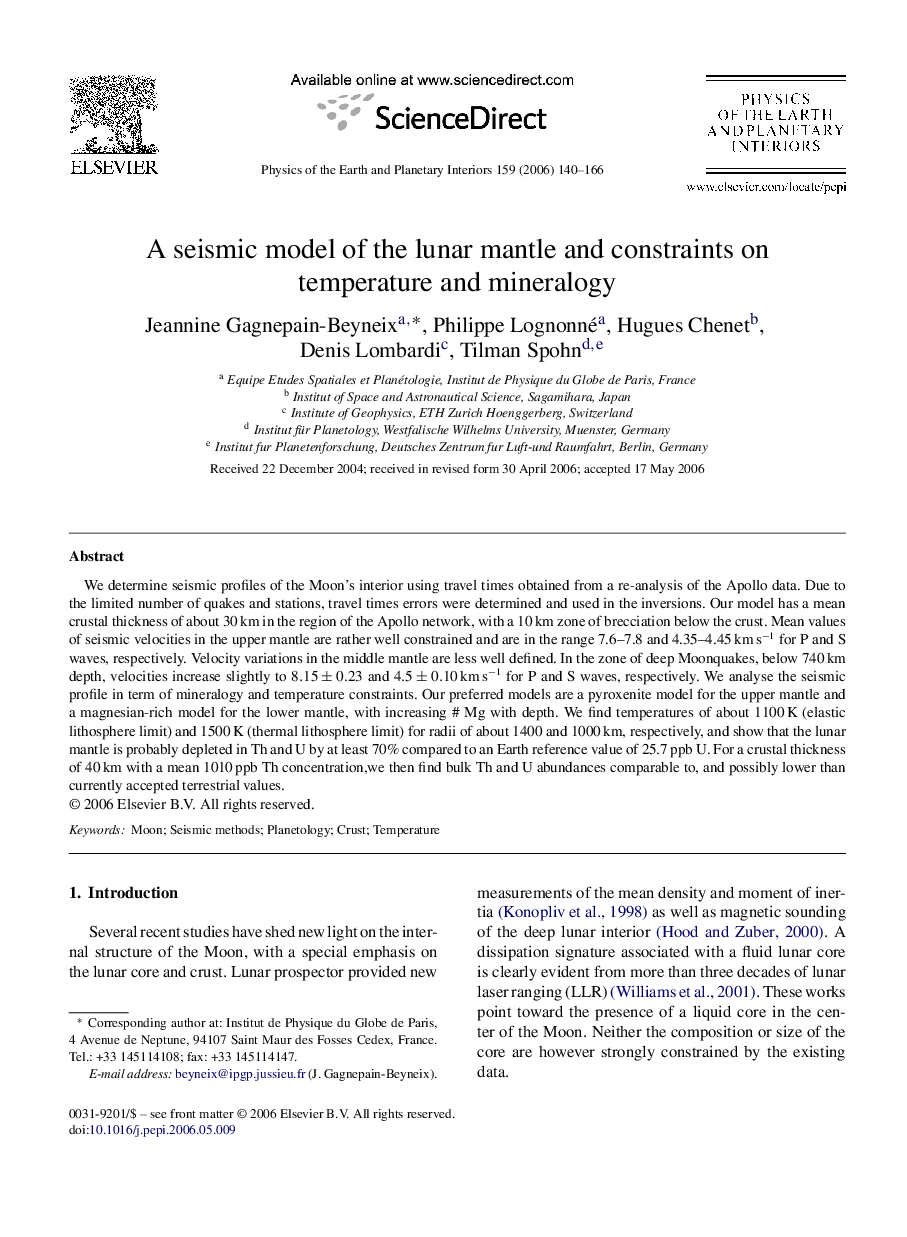| Article ID | Journal | Published Year | Pages | File Type |
|---|---|---|---|---|
| 4742565 | Physics of the Earth and Planetary Interiors | 2006 | 27 Pages |
We determine seismic profiles of the Moon’s interior using travel times obtained from a re-analysis of the Apollo data. Due to the limited number of quakes and stations, travel times errors were determined and used in the inversions. Our model has a mean crustal thickness of about 30 km in the region of the Apollo network, with a 10 km zone of brecciation below the crust. Mean values of seismic velocities in the upper mantle are rather well constrained and are in the range 7.6–7.8 and 4.35–4.45 km s−1 for P and S waves, respectively. Velocity variations in the middle mantle are less well defined. In the zone of deep Moonquakes, below 740 km depth, velocities increase slightly to 8.15±0.238.15±0.23 and 4.5±0.104.5±0.10 km s−1 for P and S waves, respectively. We analyse the seismic profile in term of mineralogy and temperature constraints. Our preferred models are a pyroxenite model for the upper mantle and a magnesian-rich model for the lower mantle, with increasing # Mg with depth. We find temperatures of about 1100 K (elastic lithosphere limit) and 1500 K (thermal lithosphere limit) for radii of about 1400 and 1000 km, respectively, and show that the lunar mantle is probably depleted in Th and U by at least 70% compared to an Earth reference value of 25.7 ppb U. For a crustal thickness of 40 km with a mean 1010 ppb Th concentration,we then find bulk Th and U abundances comparable to, and possibly lower than currently accepted terrestrial values.
